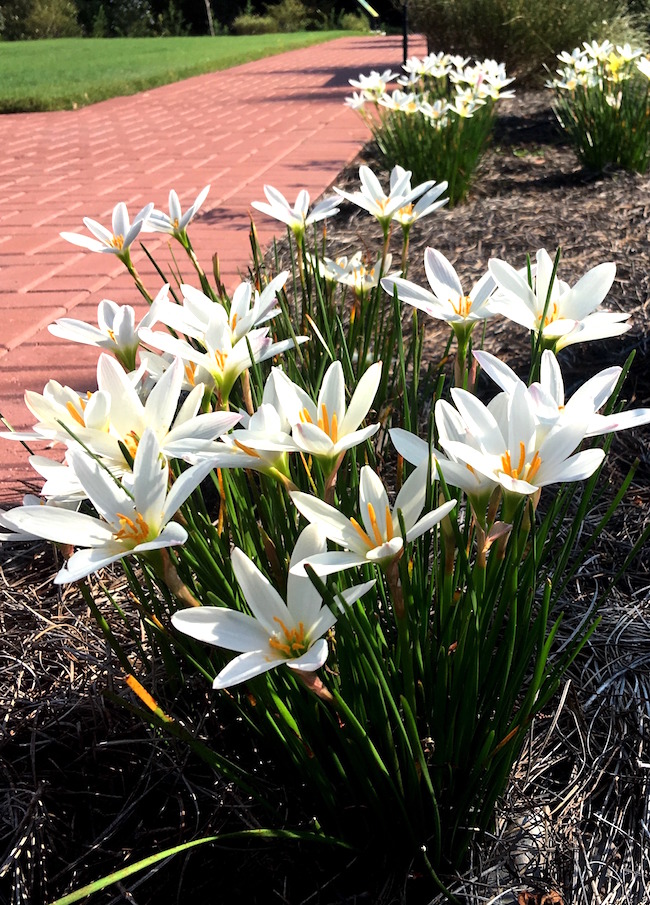Hurricane Hermine was a tropical storm by the time it reached Savannah, Georgia. While it left a wake of plant destruction, it also brought blooms by the dozens. The storm hit on Friday, and by Tuesday morning, when we returned to the Coastal Georgia Botanical Gardens at the Historic Bamboo Farm after the Labor Day holiday, we were welcomed by rain lilies.
On Friday, the day of Hermine’s arrival, the rain lilies, or Zephyranthes candida, in the White Garden were just clumps of green foliage. This relative of the amaryllis, from South American countries like Argentina, Brazil and Uruguay, now boasts dozens of flowers.
Close by, there are some clumps of yellow rain lily, Zephyranthes citrina. It, too, was simply foliage, and now, five days later, they look like small, golden lanterns. This rain lily is native to the state of Yucatan in Mexico, but both species are recommended for zones 7 through 10. They aren’t the only ones showing a little magic after Hermine’s deluge.
Tucked away in CGBG’s Cottage Garden and offering a beautiful surprise is the pink rain lily or pink fairy lily, known botanically as Habranthus robustus. It is also known as Brazilian copperlily. These flowers are much larger and hold their blooms at an angle, like they are looking at you.
The bloom of the rain lily is always a shocking surprise. It makes you stand and stare in amazement at how its blooming can be so well-timed after a rain. As amazing as these are, the evening rain lily, Zephyranthes drummondii, initially caught my attention while I was director of the National Butterfly Center in Mission, Texas. This species of rain lily is native to the area from New Mexico to Mississippi and as far north as Oklahoma and Kansas.
In this section of the NBC garden, supplemental irrigation was practically nonexistent, and the plants that grew there were among the toughest imaginable. In one bed was a sprawling patch of birdwing passion flower, Passiflora tenuiloba. This rugged, diminutive vine with small, nickel-sized blooms brings in butterflies for the purposes of both nectar and larval hosts. Imagine my surprise when, after a rare storm, glistening, white, native rain lilies popped up through the passion vine and in other areas.
No matter where you live, you too can grow rain lilies. If you live in a colder region, dig them up in the fall for winter storage. In the spring, plant bulbs 2 to 3 inches deep and 3 to 4 inches apart to develop a nice stand or patch. If you live in zones 7 through 10, fall is the best time to plant. They bloom best in full sun to partial shade in a fertile, well-drained, organically rich bed. The native species Z. drummondii, grown at the butterfly center in South Texas, had good drainage, but the soil was anything but luxuriant.
“Zephyranthes” means “flower of the west wind.” If you grow them and incorporate them into your landscape, it will no doubt be more like “magic flower from the rain.” I hope you give them a try.
Follow me on Twitter @CGBGgardenguru. Learn more about the CGBG at the Historic Bamboo Farm at www.coastalgeorgiabg.org/.








